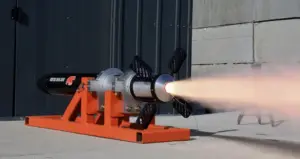
Rocket engine and motor developer Ursa Major and the Navy are jointly investing $25 million in the startup’s advanced manufacturing approach to solid rocket motors with the funding targeted at expanding the 3D printing capability for multiple large solid rocket motors, the company said on Tuesday. The joint investment builds on a small contract the Navy awarded the company in March to apply its Lynx additive manufacturing capability to the Mk 104 dual thrust solid rocket motor (SRM), the second…

 By
By 











